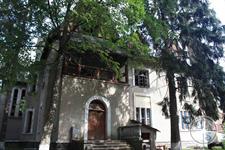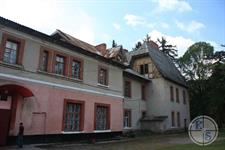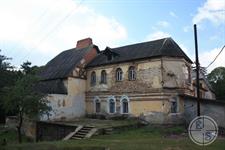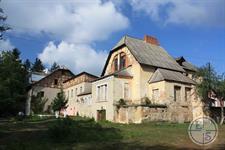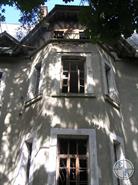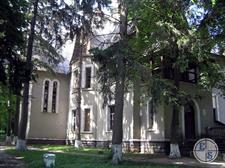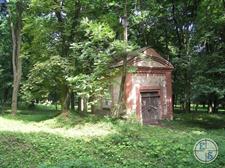Komargorod
In 1459 Kiev Prince Semen Olelkovich confirmed the right of the founder of the large landowners Shashkevych ownership of lands in the vicinity of the current Komargoroda. The first mention of the settlement on the river Rusava also apply to the XV century. Komargorod was laid, apparently nobleman Komárom-Zabuzhinskim; the word "city" in the title indicates the intention of the owner to build a fortified settlement. On the map of Ukraine in 1648 and Bratslav province in 1650, compiled by Guillaume Boplan around Komargoroda fortifications are depicted. Since 1626 Komargorodom owned princes Chetvertinskaya.
After the conclusion of Zborowski peace treaty (1649), on which the Bratslav province was transmitted under the control of Bohdan Khmelnytsky, Komargorod became hundreds of cities Bratslav Cossacks stick. During the second half of the XVII century. city almost all the time was controlled by the Cossacks, in 1664 there were only 18 "smoke" and a mill.
At the beginning of the XVIII century in a place princes Chetvertinskaya returned.
In 1773, town received from the owners of the privilege to hold monthly fairs. After the Second Partition of Poland and the formation of Podolia Komargorod became parish center Yampolsky district.
After the conclusion of Zborowski peace treaty (1649), on which the Bratslav province was transmitted under the control of Bohdan Khmelnytsky, Komargorod became hundreds of cities Bratslav Cossacks stick. During the second half of the XVII century. city almost all the time was controlled by the Cossacks, in 1664 there were only 18 "smoke" and a mill.
At the beginning of the XVIII century in a place princes Chetvertinskaya returned.
In 1773, town received from the owners of the privilege to hold monthly fairs. After the Second Partition of Poland and the formation of Podolia Komargorod became parish center Yampolsky district.
About stays in Komargorod Jews in the first half of the XVII century reported respons of Rabbi Abraham Cohen Rappaport, keep a record of the testimony of the Jewish boys Komargoroda Hanan son of p. Michael. He fled with his family from the city in June 1648 by the advancing Cossacks impregnable, as it seemed, Tulchin fortress. Of the hundreds of parishes Jews who had taken refuge in the castle of Tulchin, just lucky enough to be saved, among them was the young man. Cossacks seized Komargorod likely destroyed the remaining Jews there.
At the beginning of the XVIII century in a place princes Chetvertinskaya returned. In the second half of the XVIII century. the number of Jewish community Komargoroda did not exceed 100 people. According to the census in 1765 there lived 86 Jews in the house 21, the registration of Jews participated Rabbi Shmirka Abramovich, "quarterly" Fishel Shlomovich and "student" Aron Leizerovich.
The census in 1776 indicated only 9 Jewish homes, which were home to 13 families (32 people); These figures have certified two tenant - Itsko Moszkowicz and Leyba Hershkowitz.
At the beginning of the XVIII century in a place princes Chetvertinskaya returned. In the second half of the XVIII century. the number of Jewish community Komargoroda did not exceed 100 people. According to the census in 1765 there lived 86 Jews in the house 21, the registration of Jews participated Rabbi Shmirka Abramovich, "quarterly" Fishel Shlomovich and "student" Aron Leizerovich.
The census in 1776 indicated only 9 Jewish homes, which were home to 13 families (32 people); These figures have certified two tenant - Itsko Moszkowicz and Leyba Hershkowitz.
In 1852, there were 8 in Komargorode artisans Jews. In 1853, according to official data, in the town was a "school prayer" and 338 of its parishioners, the community used the services Tomashpol rabbi. In 1871, 204 residents of the village have been attributed to the trading estate (mostly Jews), and 845 - to rural; in the village there were only 192 houses.
In 1889 the Jewish community numbered 300 people at its disposal were two synagogues. In 1891, the weekly market, held on Tuesdays were established in Komargorode. Regular trade significantly improved the welfare of the Jews, which is reflected in the development of building and growth of the Jewish population. By the end of the XIX century. in the town (excluding suburbs) was more than fifty houses, inhabited by about 500 people.
At the beginning of the XX century was a small Komargorod closely built-up spot with a dozen Jewish shops on the main street.
During the Civil War, many Jews fled to neighboring Komargoroda Bessarabia. In 1920-ies. community-based institutions were closed by Soviet power. Jewish craftsmen - plumbers, joiners, carpenters, painters and others - joined the gang.
A significant part of school teachers and college Komargoroda economic and medical staff in the hospital 1920 -1930's. were Jews. In 1924 Petrovsky Jewish collective farm was organized in Komargorode who specialized in the cultivation of cereals. Among the farm members were Ukrainians.
In 1889 the Jewish community numbered 300 people at its disposal were two synagogues. In 1891, the weekly market, held on Tuesdays were established in Komargorode. Regular trade significantly improved the welfare of the Jews, which is reflected in the development of building and growth of the Jewish population. By the end of the XIX century. in the town (excluding suburbs) was more than fifty houses, inhabited by about 500 people.
At the beginning of the XX century was a small Komargorod closely built-up spot with a dozen Jewish shops on the main street.
During the Civil War, many Jews fled to neighboring Komargoroda Bessarabia. In 1920-ies. community-based institutions were closed by Soviet power. Jewish craftsmen - plumbers, joiners, carpenters, painters and others - joined the gang.
A significant part of school teachers and college Komargoroda economic and medical staff in the hospital 1920 -1930's. were Jews. In 1924 Petrovsky Jewish collective farm was organized in Komargorode who specialized in the cultivation of cereals. Among the farm members were Ukrainians.
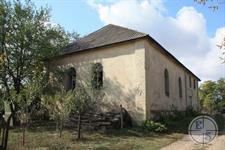 |
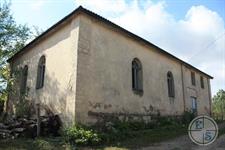 |
 |
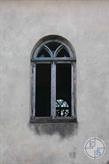 |
| In Komargorode well preserved synagogue | After the war, it was a collective farm office, and Jews secretly went there to pray | ||
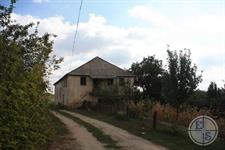 |
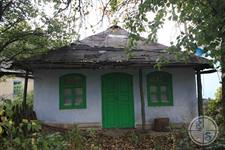 |
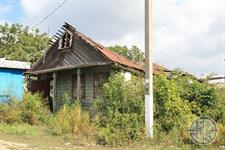 |
|
Shoah
In 1941, before the Nazi occupation in the village there were about 400 Jews.
During the occupation (July 1941 -. March 1944 years) Komargorod appeared in the Romanian occupation zone (Transnistria). Almost all Jews, are not subject to mobilization, remained in place. Initially Komargorod entered the German military units in three weeks - Romanian. August 9, 1941 the Romanian occupation forces shot dead seven men, the heads of Jewish families, as well as a family of Bessarabian Jews. After that shooting, the first in the area, many komargorodskie Jews fled from the village, mainly in Tomashpol, and when it started shooting, returned home.
In Komargoroda center created the ghetto and were driven to all the Jews from the town and surrounding villages. The enclosure of barbed wire ghetto existed from October 15, 1941 to March 10, 1944, passed the fence along the main street (now Victory Street).
Property left in the abandoned Jewish homes, was immediately looted by local residents. However, there were Ukrainians who helped their Jewish neighbors, they were left at the fence of the ghetto food, hid Jews caught outside the ghetto during a raid, invited teenagers on a variety of work, for which paid food.
In 1941, before the Nazi occupation in the village there were about 400 Jews.
During the occupation (July 1941 -. March 1944 years) Komargorod appeared in the Romanian occupation zone (Transnistria). Almost all Jews, are not subject to mobilization, remained in place. Initially Komargorod entered the German military units in three weeks - Romanian. August 9, 1941 the Romanian occupation forces shot dead seven men, the heads of Jewish families, as well as a family of Bessarabian Jews. After that shooting, the first in the area, many komargorodskie Jews fled from the village, mainly in Tomashpol, and when it started shooting, returned home.
In Komargoroda center created the ghetto and were driven to all the Jews from the town and surrounding villages. The enclosure of barbed wire ghetto existed from October 15, 1941 to March 10, 1944, passed the fence along the main street (now Victory Street).
Property left in the abandoned Jewish homes, was immediately looted by local residents. However, there were Ukrainians who helped their Jewish neighbors, they were left at the fence of the ghetto food, hid Jews caught outside the ghetto during a raid, invited teenagers on a variety of work, for which paid food.
The occupation authorities used the working population in the agricultural sector. Powered by Jews lived in the same fields, in back rooms. They were returning to the ghetto once a month to clean up and change clothes, so that constantly remained in the ghetto only children and the elderly.
After the liberation Komargoroda March 16, 1944 in the village of renewed Jewish community life.
In the early postwar years, the Jewish collective acted Komargorode. In 1952, it merged with the Ukrainian, in 1960 -1970's. collective farm led Jewish agronomist Voloh.
Until the mid-1960s. in the village I was going to minyan. By the end of 1960. formerly deserted place in Jewish homes moved in family Ukrainian peasants.
Since 1980 Jews did not live in Komargorod.
V.Lukin, "100 Jewish settlements in Ukraine"
After the liberation Komargoroda March 16, 1944 in the village of renewed Jewish community life.
In the early postwar years, the Jewish collective acted Komargorode. In 1952, it merged with the Ukrainian, in 1960 -1970's. collective farm led Jewish agronomist Voloh.
Until the mid-1960s. in the village I was going to minyan. By the end of 1960. formerly deserted place in Jewish homes moved in family Ukrainian peasants.
Since 1980 Jews did not live in Komargorod.
V.Lukin, "100 Jewish settlements in Ukraine"
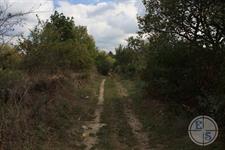 |
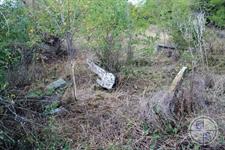 |
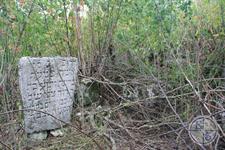 |
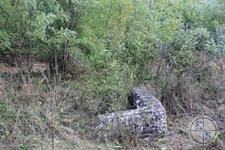 |
| The road to the Jewish cemetery | There remains reburied after the elimination of the cemetery adjacent Markovka | ||
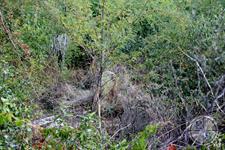 |
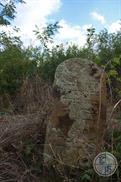 |
||
Komargorod 2008, 2012
Vinnitsa Region

My shtetl
My shtetl
Jewish towns of Ukraine
Jewish towns of Ukraine

